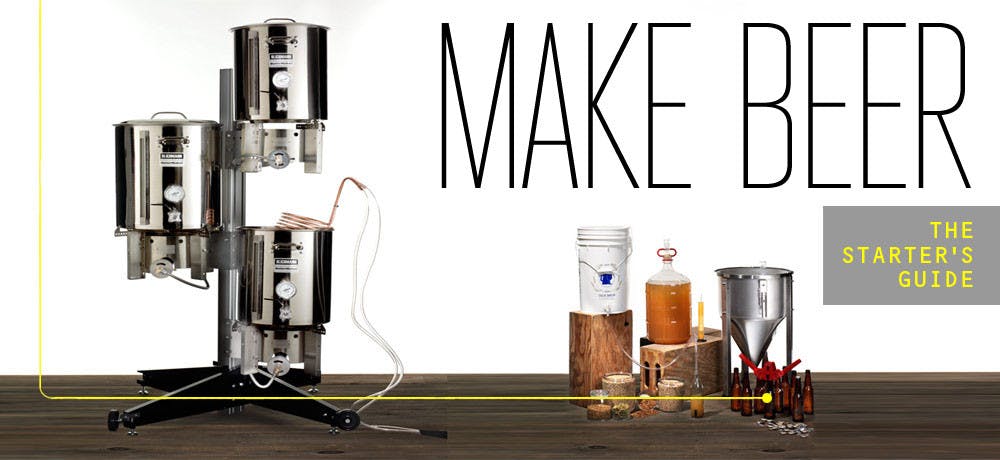Last summer, Abby Woolf ’17.5 came across a book about winemaking and decided to buy it on a whim, thinking it might be a new hobby to invest in when she returned to Vermont in the fall. Although instead she ended up making cider and, most recently, beer, the process of brewing stretched from October to January and left her with about 40 bottles of cider and a possible business opportunity.
Woolf, a double biology and film major from California, had no previous experience of brewing and taught herself according to what she had read. She began by driving to the Vermont Home Brew Supply Store in Winooski, Vermont, to buy the necessary equipment, and then went to Happy Valley Farm in Middlebury to buy five gallons of plain apple cider.
“At first I said I was making wine because at the time I thought it wouldn’t be that hard, but it’s so much harder than cider or beer. There’s more equipment and it takes more time,” Woolf explained. “So then I decided to do cider instead, because the apples were in season.”
The brewing process began with pouring the five gallons of cider into a bucket and adding yeast, which then ate the sugar to produce carbon dioxide and alcohol. The cider-yeast mix then sat in the bucket fermenting for two and a half months, with an airlock on top of the bucket to let the carbon dioxide out.
Once it was done fermenting, Woolf siphoned it into a different container called a carboy.
It sat there for another few weeks, allowing the yeast and other particles to settle out in the bottom. This product was then siphoned again into another bucket, before finally being bottled for consumption.
“That will produce still cider, because the way you measure how much alcohol is in the cider is with a hydrometer, which measures the specific gravity,” Woolf said. “When it’s done fermenting it will say 0% potential alcohol, which means all the sugar is gone. If you want to have carbonated cider, you have to add priming sugar to the bottle, so that whatever yeast is left will ferment that little bit of sugar.”
Woolf bottled all the cider, but found that it tasted very intense at first.
“Two weeks after I bottled it, it was very intense and bitter. So I let it sit a little more and it started tasting better and better,” Woolf said.
Woolf also experimented with adding different flavors to her cider through tinctures, a method in which she took lavender, ginger, and cinnamon sticks and put them separately in three different jars filled with vodka, which sucked up the nutrients from the sticks.
She then added the flavorings to her bottles and found that the lavender tincture was the most popular.
The hardest part of brewing for Woolf was waiting for fermentation to take place and planning when to go down to the Old Stone Mill to check on it.
In the past month, she switched to brewing beer. While she was waiting for it to ferment, it exploded in the carboy.
“What happens with beer is that once it’s in the carboy it bubbles up and you need to watch it. But I didn’t get a chance to go check on it enough, so it overflowed,” Woolf said.
Despite the mishaps, Woolf has been successful in her brewing endeavors to create a final bottled product.
The bottling is actually her favorite part of the process.
“Just because you’re winding it [the process] up. You still have to wait after that for it to taste good, but the act of bottling is fun,” Woolf said.
Woolf, however, is not the only one in her family who is interested in brewing. Her brother, who recently graduated from college in Australia, is also experimenting with brewing beer. He called her out of the blue one day to tell her that he and his friend were organizing a brewing company in California called The Fringe, which would specialize in flavored beer. They plan to promote local artists with advertisements underneath the label, giving a unique local design to each bottle.
“They are tapping into an untapped market in America, which is flavored beer. It’s really big in Australia. They have made a lavender beer, fennel beers, those are the good ones,” Woolf said. “Right now all they have is a label and a name and some flavors that they’re working on.”
“I definitely will keep [brewing] and it would be really cool to start a brewery. I actually am kind of working with my brother and his friend, so if that takes off that would be awesome,” Woolf said. “My career path isn’t along the lines of business, but I’ll always brew.”
Woolf gets Crafty with Beer and Cider

Comments


